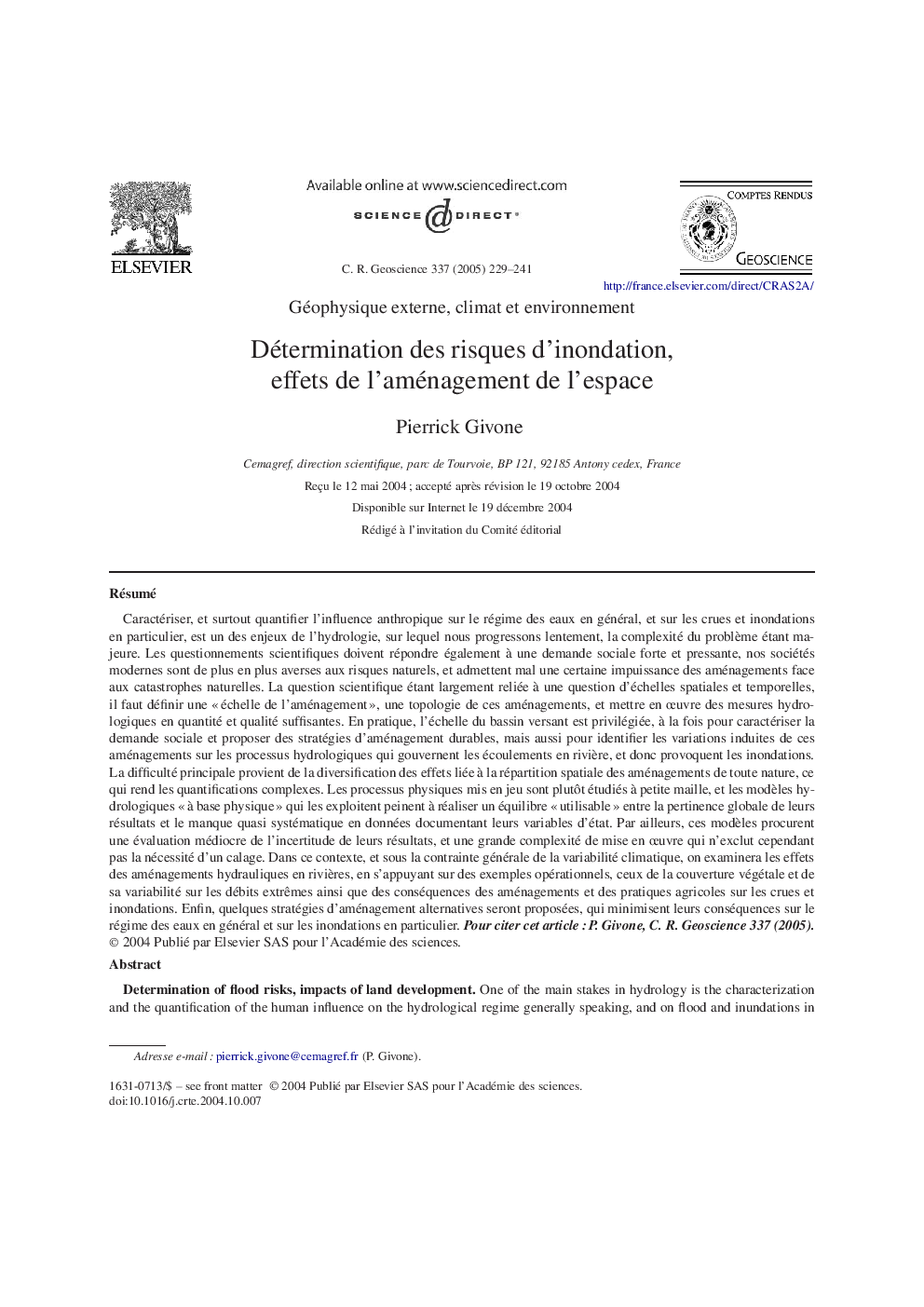| Article ID | Journal | Published Year | Pages | File Type |
|---|---|---|---|---|
| 9461757 | Comptes Rendus Geoscience | 2005 | 13 Pages |
Abstract
One of the main stakes in hydrology is the characterization and the quantification of the human influence on the hydrological regime generally speaking, and on flood and inundations in particular. The improvement of the available knowledge in this matter is slow, due to a huge complexity. The social demand toward the scientists is however very high and insistent, since our modern societies have an aversion to be at risk, and do not accept any more the relative powerlessness of the structural developments against natural disasters. Since the main scientific question is very related to temporal and spatial scaling, a 'management scale' has to be defined, as well as a topology of the developments in the hydrographical network, together with a sufficient quantity of relevant hydrological measurements. Practically, the hydrological basin is preferred as appropriate object, both to characterize the social demand and to propose sustainable development strategies, but also to identify the variations on the hydrological processes governing river-flow routings and inundations due to these structural developments. The main difficulty comes from the huge diversity of these effects related to the spatial distribution of various developments and equipments, which makes any quantification complex. Moreover, the concerned physical processes are rather studied at small scales, and the related physically based models have troubles to balance, in a useful way, the global consistency of those results and the lack almost systematic of data to be fed in those parameters. More than that, these models give a poor evaluation of their internal uncertainty, are complicated to be operated, and still need to be calibrated. In this respect, and under the general constraint of climatic variability, the effects of hydraulic structures will be studied, based on operational examples, then the effects of the vegetal land cover and its variability on extreme discharges, and finally the consequences of the development of rural areas and of land-use management on floods and inundations. Lastly, some alternative land-development strategies will be proposed, which minimize their consequences on water regime generally speaking, and on floods and inundations in particular. To cite this article: P. Givone, C. R. Geoscience 337 (2005).
Keywords
Related Topics
Physical Sciences and Engineering
Earth and Planetary Sciences
Earth and Planetary Sciences (General)
Authors
Pierrick Givone,
